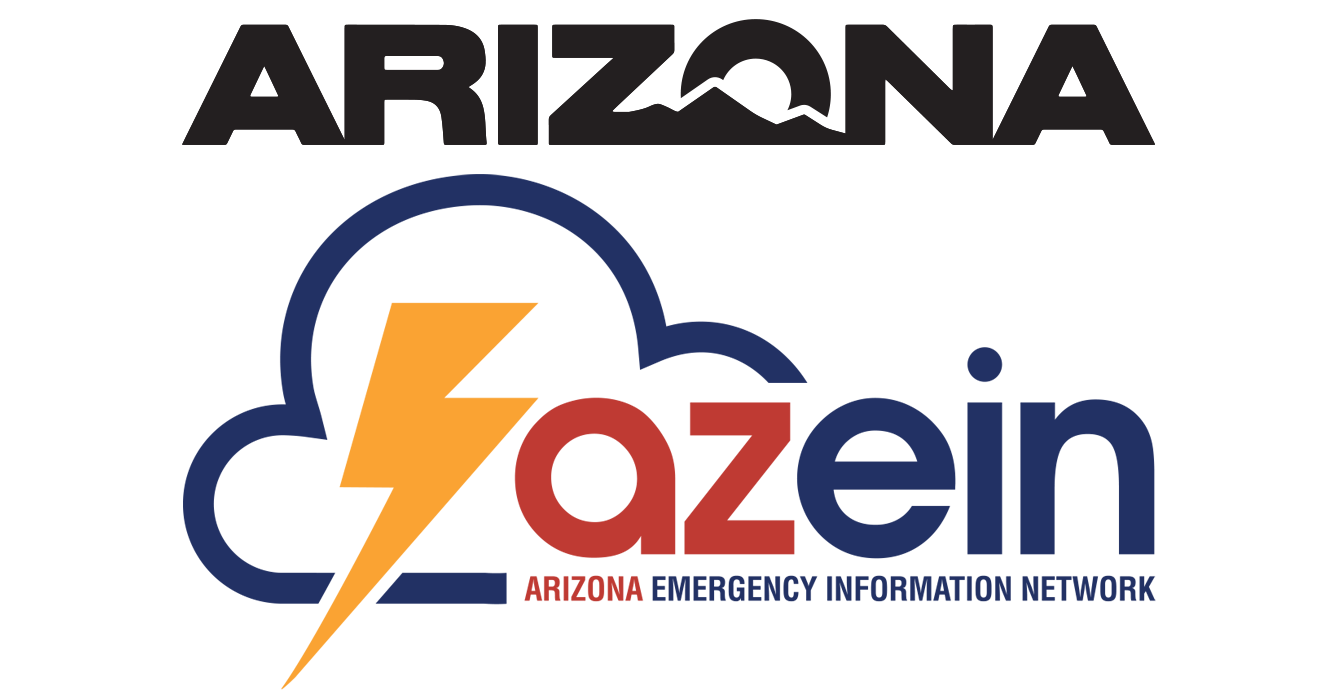Wildfire
Arizona's hot, dry climate makes wildfire a significant concern year-round. Wildfires often begin unnoticed and can spread quickly, igniting brush, trees and homes. In its aftermath, a wildfire can cause flooding or disrupt transportation, gas, power and communications.
A few simple steps can help reduce the effects of wildfire for your home, business and family. Follow the Ready, Set, Go! program to learn what actions to take before an emergency and during an evacuation.
BEFORE
Family
- Build an emergency go kit
- Make a family communication plan
- Sign up for your county or tribe’s emergency alert system.
- Plan several escape routes away from your home - by car and by foot. Have a plan for pets and livestock.
- People start most wildfires—Learn how to properly extinguish a campfire (video), and find out how you can promote and practice wildfire safety.
Home and Property
- Have Their Backs. Learn to live Firewise®.
- Create a “defensible space” to protect your home and the firefighters that may have to defend it.
- Remove vegetation and other flammable materials around your home to create a 30 to 100-foot safety zone. Don’t forget to check the rain gutters and under the deck.
- Clear items that will burn from around the house or other structures, including wood piles, lawn furniture, barbecue grills, tarp coverings, etc. Move them outside of your defensible space.
- Have a garden hose that is long enough to reach any area of the home and other structures on the property.
- Make sure that fire vehicles can get to your home. Clearly mark all driveway entrances and display your name and address.
- Create a “defensible space” to protect your home and the firefighters that may have to defend it.
Read More
DURING
- If you are in an area designed in SET status, be alert - there is significant danger in your area
- Know the actions to take under SET status
- Consider voluntarily relocating to a shelter or with family/friends outside the affected area.
- If advised to evacuate, make sure you Go! immediately.
- If smoky conditions exist, stay inside in a safe location or go to a community building where smoke levels are lower.
- Continue monitoring NOAA Weather Radio and local alerting systems for current emergency information and instructions.
Read More
AFTER
- Send text messages or use social media to reach out to family and friends. Phone systems are often busy following a disaster. Make calls only in emergencies.
- If you have evacuated, do not enter your home until emergency officials say it is safe.
- Check with local authorities to make sure your water is safe to drink.
- Follow public health guidance on safe cleanup of fire ash and safe use of masks.
- Be aware that wildfires dramatically change landscape and ground conditions, which can lead to increased risk of flooding due to heavy rains, flash flooding and mudflows. Flood risk remains significantly higher until vegetation is restored—up to 5 years after a wildfire.
Read More
RESOURCES
- Know Before You Go. Get Fire Restriction information at 1-877-864-6985.
- Arizona Wildfire Response Dashboard
- InciWeb for active wildfires in Arizona.
- Arizona Interagency Wildfire Prevention and Information map-based tool with information about fire restrictions on public lands
- Fire Potential Outlook for daily, weekly and monthly reports from Southwest Coordination Center Predictive Services.
- Ready, Set, Go! program about proactive measures to take before an emergency and actions to follow when communities are threatened.
- Firewise USA
- Health Effects of Smoke (PDF)
- Arizona Weather Dashboard
- Arizona Department of Environmental Quality Portable Particulate Monitors
- Arizona Department of Environmental Quality Daily Prescribed Fire Approvals
Arizona Department of Agriculture livestock evacuation tips and information
Arizona Humane Society how to protect your pets in an emergency
- What to do DURING a Wildfire (English PDF), (Spanish PDF)
- What do do AFTER a Wildfire (English PDF), (Spanish PDF)
- Ready.gov
- Wildfire Risk to Communities
Read More

